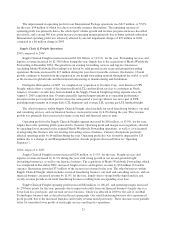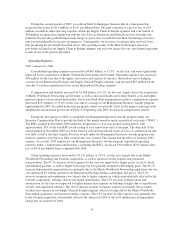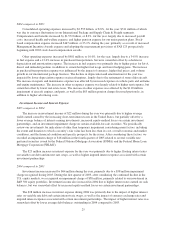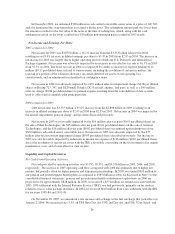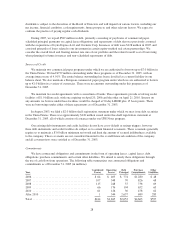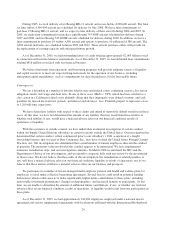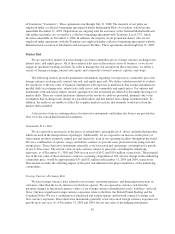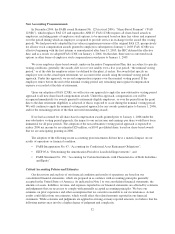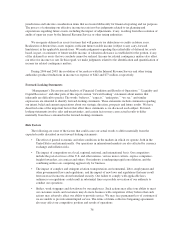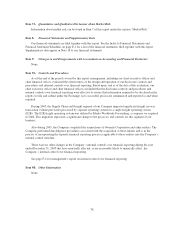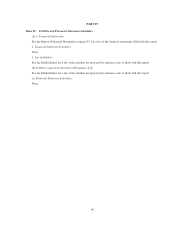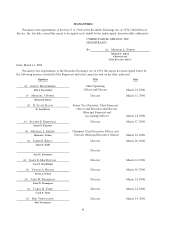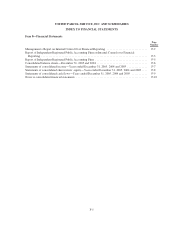UPS 2005 Annual Report Download - page 47
Download and view the complete annual report
Please find page 47 of the 2005 UPS annual report below. You can navigate through the pages in the report by either clicking on the pages listed below, or by using the keyword search tool below to find specific information within the annual report.New Accounting Pronouncements
In December 2004, the FASB issued Statement No. 123 (revised 2004), “Share-Based Payment” (“FAS
123(R)”), which replaces FAS 123 and supercedes APB 25. FAS 123(R) requires all share-based awards to
employees, including grants of employee stock options, to be measured based on their fair values and expensed
over the period during which an employee is required to provide service in exchange for the award (the vesting
period). We had previously adopted the fair value recognition provisions of the original FAS 123, prospectively
for all new stock compensation awards granted to employees subsequent to January 1, 2003. FAS 123(R) was
effective beginning with the first interim or annual period after June 15, 2005; the SEC deferred the effective
date, and as a result, we adopted FAS 123(R) on January 1, 2006. On that date, there were no unvested stock
options or other forms of employee stock compensation issued prior to January 1, 2003.
We issue employee share-based awards, under our Incentive Compensation Plan, that are subject to specific
vesting conditions; generally, the awards cliff vest or vest ratably over a five year period, “the nominal vesting
period,” or at the date the employee retires (as defined by the plan), if earlier. For awards that specify an
employee vests in the award upon retirement, we account for the awards using the nominal vesting period
approach. Under this approach, we record compensation expense over the nominal vesting period. If the
employee retires before the end of the nominal vesting period, any remaining unrecognized compensation
expense is recorded at the date of retirement.
Upon our adoption of FAS 123(R), we will revise our approach to apply the non-substantive vesting period
approach to all new share-based compensation awards. Under this approach, compensation cost will be
recognized immediately for awards granted to retirement-eligible employees, or over the period from the grant
date to the date retirement eligibility is achieved, if that is expected to occur during the nominal vesting period.
We will continue to apply the nominal vesting period approach for any awards granted prior to January 1, 2006,
and for the remaining portion of the then unvested outstanding awards.
If we had accounted for all share-based compensation awards granted prior to January 1, 2006 under the
non-substantive vesting period approach, the impact to our net income and earnings per share would have been
immaterial for all prior periods. The adoption of the non-substantive vesting period approach is expected to
reduce 2006 net income by an estimated $29 million, or $0.03 per diluted share, based on share-based awards
that we are anticipating granting in 2006.
The adoption of the following recent accounting pronouncements did not have a material impact on our
results of operations or financial condition:
• FASB Interpretation No. 47, “Accounting for Conditional Asset Retirement Obligations”;
• EITF 05-6, “Determining the Amortization Period for Leasehold Improvements”; and
• FASB Statement No. 150, “Accounting for Certain Instruments with Characteristics of Both Liabilities
and Equity”.
Critical Accounting Policies and Estimates
Our discussion and analysis of our financial condition and results of operations are based on our
consolidated financial statements, which are prepared in accordance with accounting principles generally
accepted in the United States of America. As indicated in Note 1 to our consolidated financial statements, the
amounts of assets, liabilities, revenue, and expenses reported in our financial statements are affected by estimates
and judgments that are necessary to comply with generally accepted accounting principles. We base our
estimates on prior experience and other assumptions that we consider reasonable to our circumstances. Actual
results could differ from our estimates, which would affect the related amounts reported in our financial
statements. While estimates and judgments are applied in arriving at many reported amounts, we believe that the
following matters may involve a higher degree of judgment and complexity.
32



